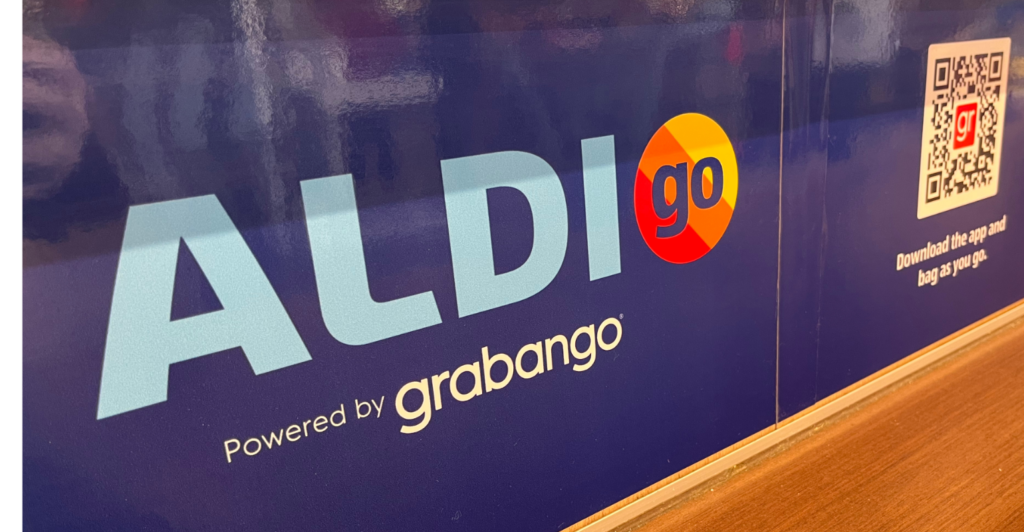Almost a month has passed since Amazon announced it’s moving away from its checkout-free “Just Walk Out” technology, giving its main competitor, Berkeley, Calif.-based Grabango, an edge in the market.
The tech company, which incorporated in 2017, made big headlines earlier this year when news outlets began reporting that it was partnering with German discount grocer Aldi on a pilot project at one of its stores in Aurora, Ill.
Prior to the Aldi deal, Grabango’s two biggest customers were c-store chains 7-Eleven and Circle K — Aldi is the company’s first foray into the world of grocery, but Grabango founder and CEO Will Glaser tells Supermarket News that grocery has always been part of the business model.
About two weeks after the announcement that Amazon would scale back “Just Walk Out” tech at most of its stores, Grabango and Aldi made a public announcement about the pilot in Aurora.
“Aldi has launched ALDIgo, a checkout-free shopping experience that utilizes Grabango technology, at one of its Chicago-area grocery stores. Aldi is continuously looking for new ways to be innovative and provide a best-in-class experience for its shoppers, and this is one example of that in action,” an Aldi spokesperson said in an email to Supermarket News.
In an interview with Supermarket News in mid-April, Glaser could not give specifics about whether the tech will be rolled out to other Aldi stores, but he did reveal that the program has enjoyed a high adoption rate by customers and shrinkage has declined as a result of the tech being in place since November 2023.
And Aldi isn’t the only grocer Grabango is working with, Glaser said.
We have other clients in grocery — Aldi is the only grocery store that was announced …” he said, noting that Grabango’s focus is on large retailers. “So, we don’t have any deals with mom-and-pop operations or with a stadium with three outlets in it. We’re only working with very large organizations, mostly multinationals.”
Since Amazon announced plans to focus on smart shopping carts over its “Just Walk Out” technology, Glaser has publicly discussed the differences between Grabango’s approach, which he emphasized is more cost efficient and easier to retrofit to existing stores like the Aldi in Aurora.
Amazon’s and Grabango’s tech share a few similarities — for instance, both use video cameras placed throughout the store to capture purchases and tally them as shoppers do their shopping. That’s mainly where the similarities end, though, according to Glaser.
He said the biggest difference is Amazon’s reliance on shelf-sensors, which can tell when an item has been removed. Grabango’s tech relies primarily on computer vision, Glaser said.
That difference was Amazon’s undoing, according to Glaser. He said the shelf-sensors are not only expensive, but they make it difficult to retrofit existing stores, and once the shelves are in place, they are difficult to change.
“This rigidity translates into high operational costs on top of the steep hardware investments,” Glaser wrote recently in a blog post.
He said in an interview that Amazon’s tech precludes grocers from carrying a large diversity of products that change often.
“You can’t move them, so there’s no end caps. You can’t run promotions or adjust product facings, and you can’t do anything seasonal, so there’s no Easter candy. There’s no flags on Memorial Day. There’s no flowers for Mother’s Day,” he said. “It’s all the same merchandise every day. So, if you just walk in and look around, it looks like a grocery store, and it feels like a grocery store, but if you actually try to use it for your weekly shop, it’s sort of unsatisfying, for all those reasons.”
In comparison, the Grabango technology is designed to retrofit existing stores easily and with practically no awareness from customers. The checkout kiosk at the front of the store, where shoppers scan a QR code before leaving, and the unnoticeable cameras placed in the ceiling are the only differences once the system is installed.
The checkout-free technology from Amazon and others has been years in the making, but if Aldi moves forward with Grabango, the U.S. market will get its first real taste of AI-powered shopping.
“My view is that change is coming really quickly, like email and smartphones and ATMs and Uber and text messaging, all these things that we now take for granted,” he said. “Checkout-free will soon be everywhere as well, and then we’ll be able to talk to our kids about well, you know what I used to wait in lines and strangers used to handle all my food and telephones were tied to the wall with a cord.”


